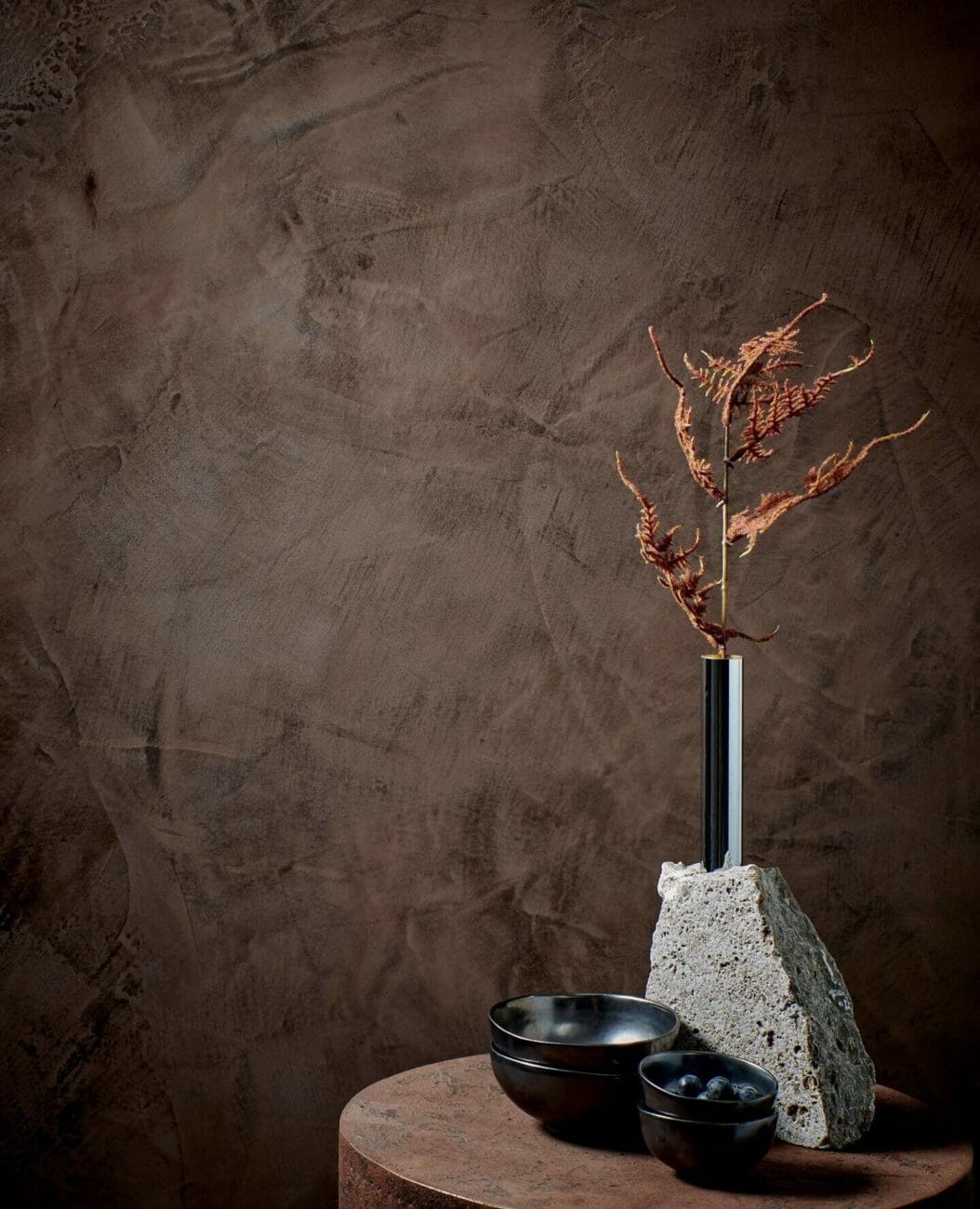18 Wall Texture Types to Transform Any Room on a Budget
Ever wondered how to add character and depth to your walls without breaking the bank? Wall textures might be your ideal solution for a stunning interior transformation.
In a Nutshell:
Bulk textures like popcorn and knockdown provide an easy, DIY-friendly approach, suitable for various spaces. Surface-applied textures, including comb, slap brush, and sand swirl, allow for creative expression and can be applied with basic tools like brushes and spray guns. For a durable and visually appealing option, consider Venetian plaster or stucco textures. Each method delivers a unique aesthetic, from subtle elegance to bold statements, empowering you to personalize your space while addressing practical considerations like sound dampening and moisture resistance.
Interior Design Wall Textures Ideas
To understand your wall texture options, you need to figure out how the wall is constructed. That said, you need to know two basic textured walls: surface-applied and bulk-applied.
Textured Wall Design Tips
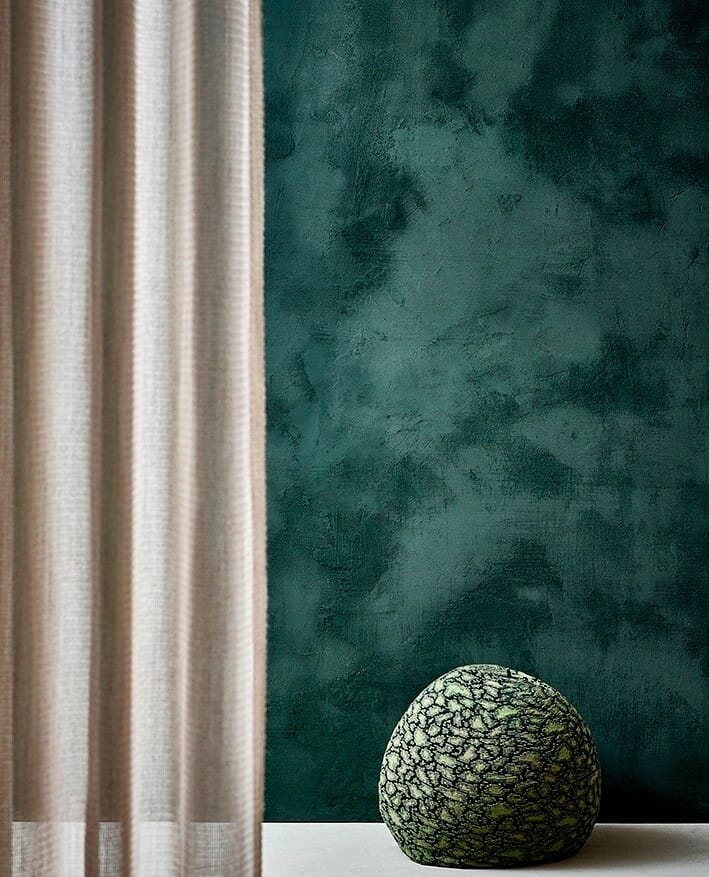
Surface-Applied Textured Walls:
Bulk-Applied Textured Walls:
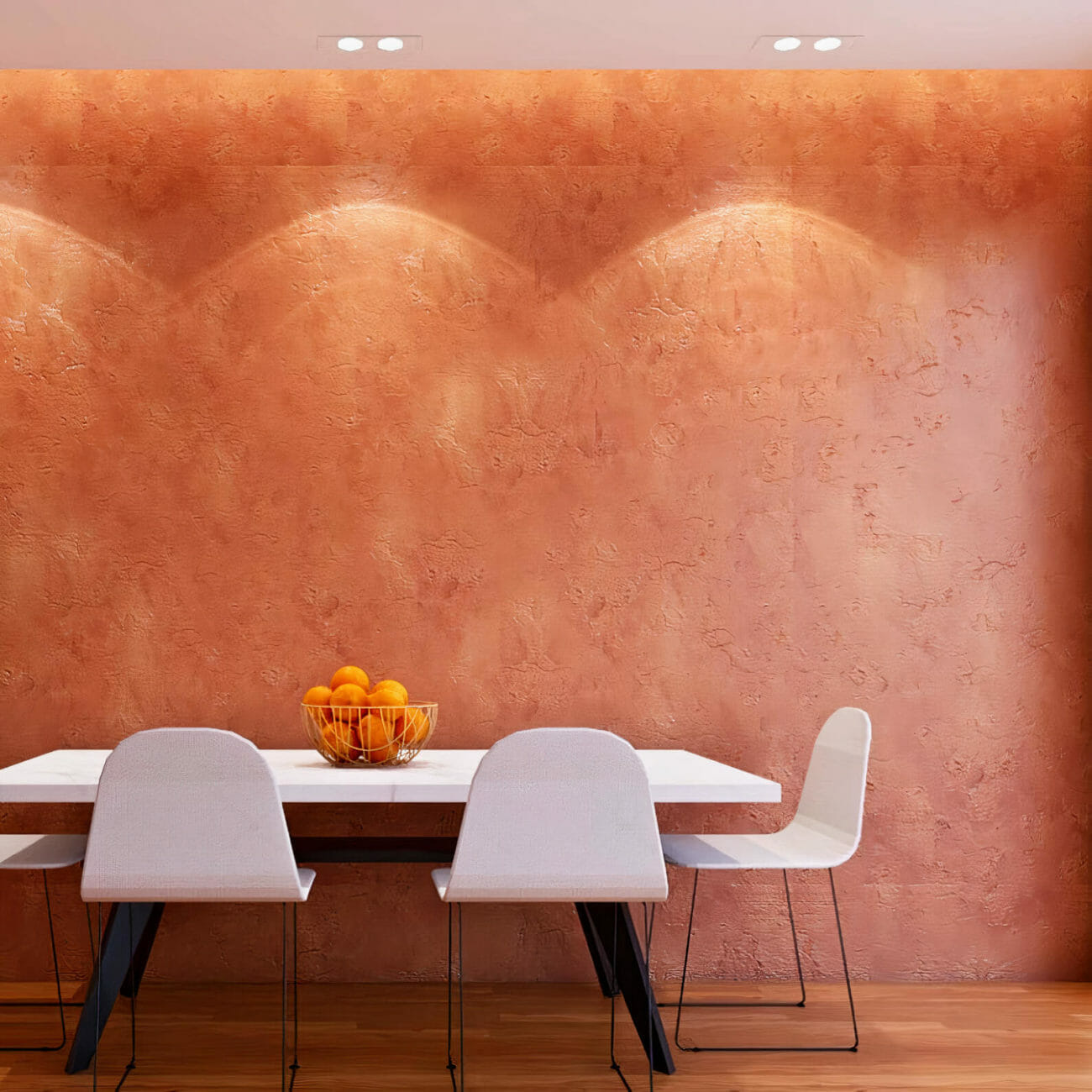
18 Textured Wall Design Options
1 | Popcorn Textured Wall
The most well-known wall texture (by far) is the popcorn type. It is a simple, inexpensive texture option that can be used to create a more upscale look on a budget. The downside of using this texture type is that it’s delicate and time-consuming to repair if damaged.
To make this, you combine drywall compound (a mix of water and gypsum) with cellulose filler (fiber made from wood pulp). This texture is a great choice for a basement or bathroom, as it provides sound-dampening and moisture resistance.
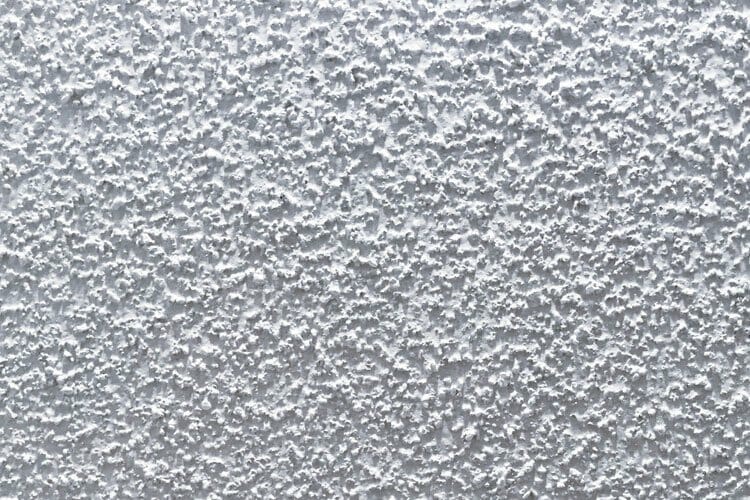
2 | Knockdown Textured Walls
Knockdown wall texture is perfect if you’re keen to add a stucco-like appearance to your room. As the name implies, this surface-applied texture is similar to a lightweight spackle or joint compound. It’s durable and easy to repair if damaged.
Knockdown texture is a textured wall that looks like dried mud. It’s made with a base coat of joint compound, which you then spray with a fine layer of water to make droplets. This creates the ‘mud’ look, and you can add more layers for deeper relief. Knockdown texture is great in bathrooms or near sinks, where it can be cleaned easily.
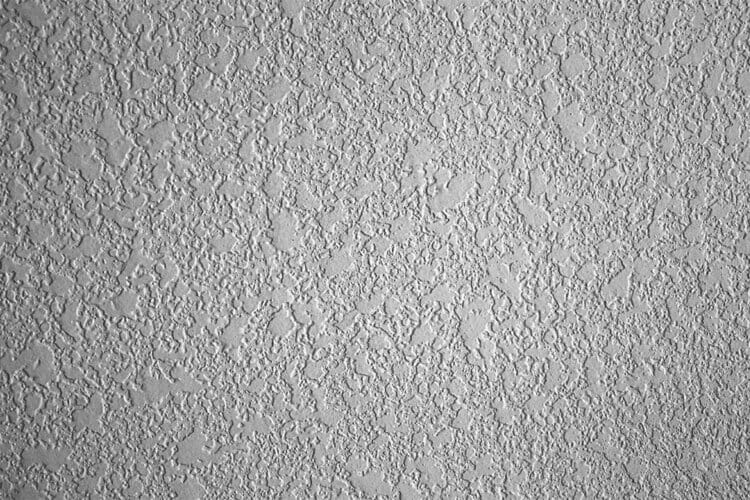
3 | Stomp Knockdown Texture
Stomp knockdown, or mud texture, is a mix of a drywall compound and an additive that makes the material rubbery when dry. This is a bulk-applied texture that is often used to replicate a natural stone or brick look.
This allows you to do more with it – from molded wall designs to stair treads. If you need your wall repaired, this option is the cheapest and easiest way to get a faux textured wall without any fuss. The rubberized composition also means that stomp knockdown won’t crack over time like regular drywall.
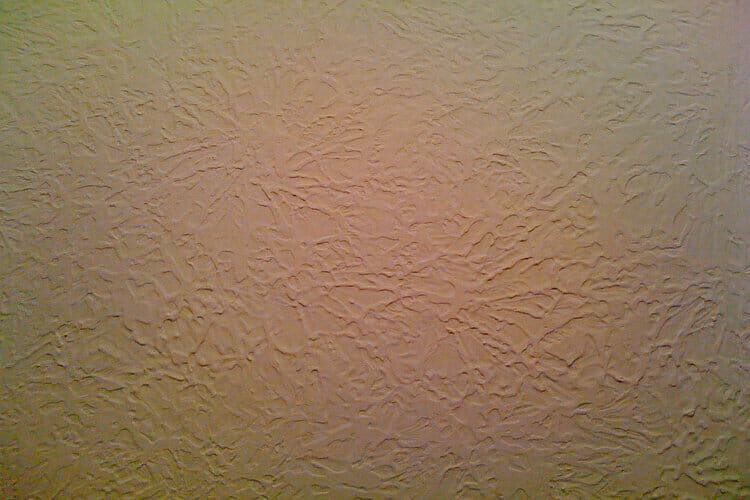
4 | Slap Brush Texture Coating
Slap on a textured wall coating is an easy way to get the look of a bulk-applied texture without the mess. A thick bristle brush is the way to go here, and if applied right, slap brush texture offers decent soundproofing, and there’s no need for a spray gun.
You can use this for popcorn or slap brush knockdown, but it really shines when applied over drywall compound. Slap brush coats are available in different levels of shine, from flat to high-gloss. If you’re looking for a wet look for a feature wall, this is a brilliant option.
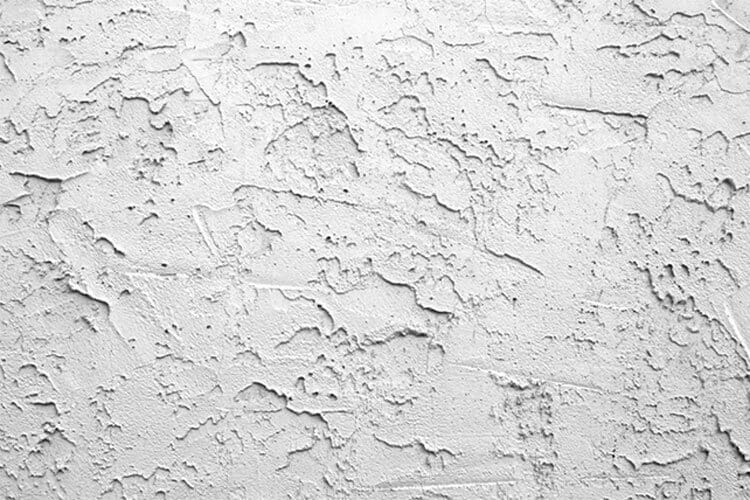
5 | Sand Swirl Texture Coating
This technique combines two very popular techniques, comb and sand spray. You can create endless designs when it comes to the sand swirl wall texture. This coating is typically used on flat surfaces, but can be applied to painted drywall for a unique textured wall.
Generally, swirls of sand are painted onto drywall or another substrate, then covered with a topcoat sealer. To create the sand look, you have to mix your own colors from powdered pigments and clear coatings. Sand swirl is ideal for a modern home and a darker grey color works perfectly with this textured wall type.
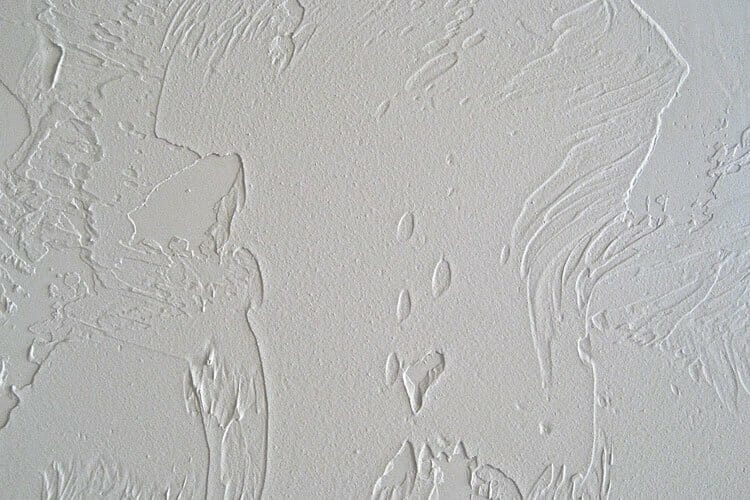
6 | Comb Textured Walls
Combination texture, also called herringbone pattern, is a mixed bag of tricks. One of the most renowned comb wall texture techniques is the rainbow pattern. This is a very specific way to apply a two-step coating process that creates a dramatic, multicolored pattern on your wall.
This textured wall option involves laying strips of tape over a base coat of either drywall or spackling compound. When you apply the topcoat, it spreads out to fill in between the ridges made by the tape. Comb patterns are best used in one direction, where they’ll resemble wood or stone.
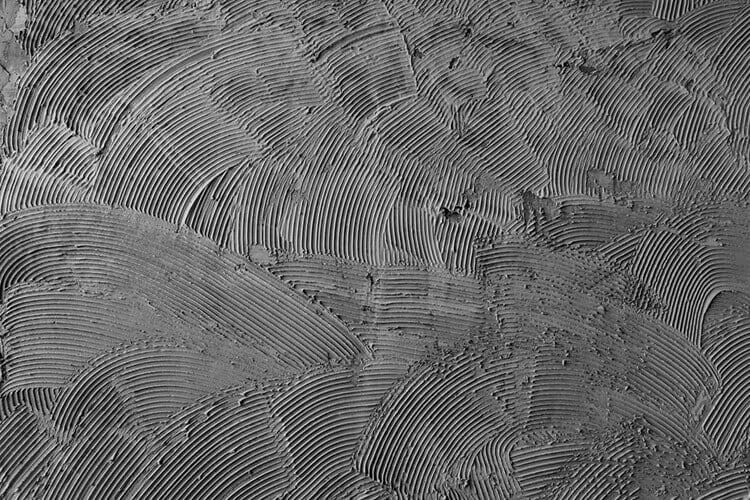
7 | Orange Peel Texture Coating
Ah, the good old time tested orange peel technique. This texture can be seen in homes and commercial buildings alike throughout the world. This is a perfect choice for ceilings and low-traffic spaces (hallways and mens bedrooms), but it’s not recommended for high-traffic zones because of its propensity to collect dust and lint.
An orange peel texture is made by either spraying or brushing on a base coat of paint with an air gun, then quickly removing it. The process can be done in one direction or multiple directions, depending on how many times you repeat the action after each layer. This creates ridges that run perpendicular to the initial spray path.
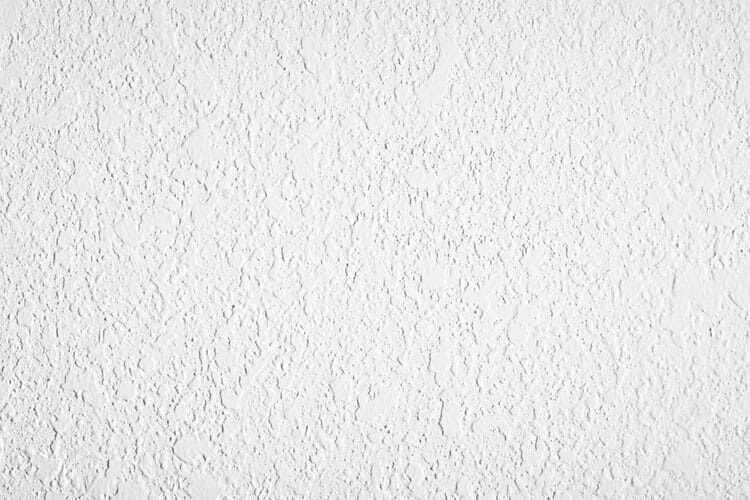
8 | Venetian Plaster Texture
Venetian plastering is damn near one of the oldest technique types of wall texturing. It’s achieved by using a trowel to apply white-wash (slaked lime) over drywall. This is often the choice of restoration specialists like conservators and historic preservationists, because it more or less matches the original look of plaster walls from centuries ago.
Venetian plaster is a mix of gypsum, stone dust, and pigment that’s applied with a trowel. The result can have different finishes depending on the process by which it’s done: from the irregular striations of Venetian plaster to smooth stucco. If you want an even more luxurious look, you can finish off your Venetian plaster with feldspar (a powdered mineral) to give it a glossy sheen.
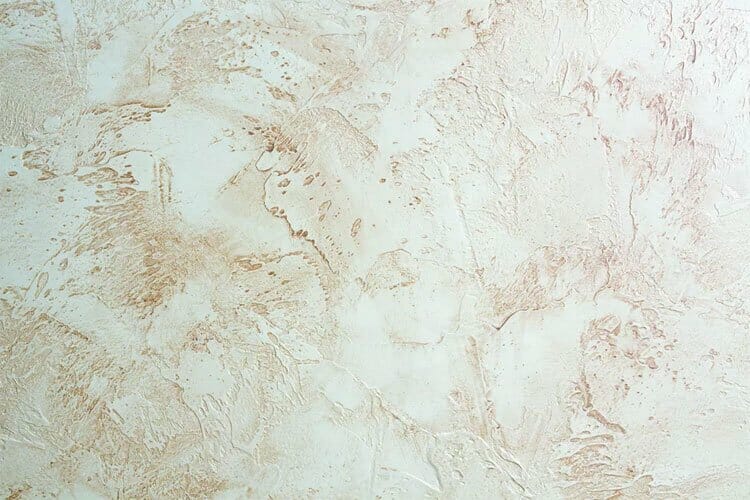
9 | Skip-Trowel Textured Walls
By making use of a large curved knife, a skip trowel texture can be completed as a solo venture. Skip troweling is a good choice for someone who wants an easy-to-create, casual look that won’t cost too much to maintain. Also, skip troweling can create a more bumpy appearance than regular trowel texturing. So it’s got that going for it.
Simply put, a skip-trowel texture is a textured wall finish made by applying a joint compound with a trowel that has been scraped clean. To get the ideal lathered look, scrape off the excess before it hardens. This creates a slightly bumpy surface – you can go for a rougher version of this look, or smooth it out with a course-grit sanding pad.
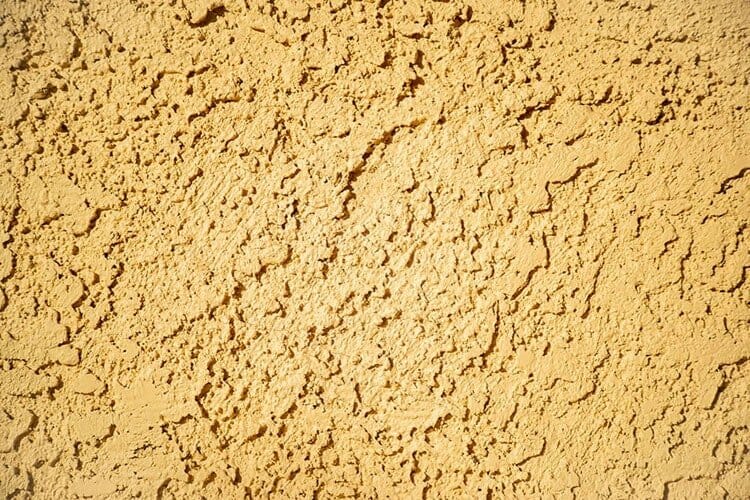
10 | Rosebud Texture Wall
Rosebud wall texture is beloved because of how painless it is to apply to drywall. It’s also a great texture for low-traffic areas because it absorbs sound very well. However, the finish is only appropriate for certain homes. The rosebud look works best in traditional interiors with 12-inch or wider drywall.
Rosebud texture is a textured wall finish that’s made with an air gun. It requires two to three coats of paint, with the first acting as a primer. When the topcoat is added, it spreads out over the bumpy surface of the underlying paint layer – creating rounded ridges. Rosebud texture is a great option for any room in your home since you can customize it to fit with the style of any décor.
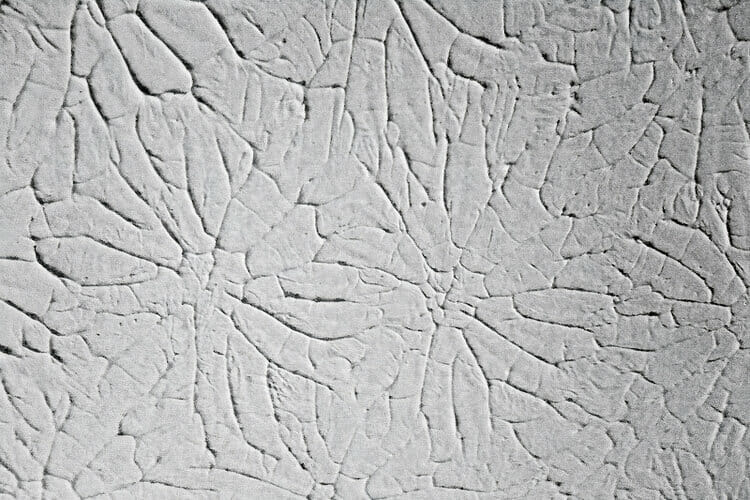
11 | Hawk and Trowel Texture
Hawk and trowel texture is basically layers of drywall mud rolling over other layers of drywall mud. Because it can be created with various trowel sizes, you can create a more intricate design with hawk and trowel textures. Also worth noting is that this texture type has many sub-variations – including straight troweling, cross-hatching, door marking, shadow lines, and feather edging.
Hawk and trowel texture coating is made by brushing on the first layer of paint, then quickly applying an off-white second coat with the trowel. This process leaves some areas untouched while creating lighter tones in others – it’s almost like stippling artwork for your walls! To create the look you see here, a sponge can be used to create a marbleized effect.
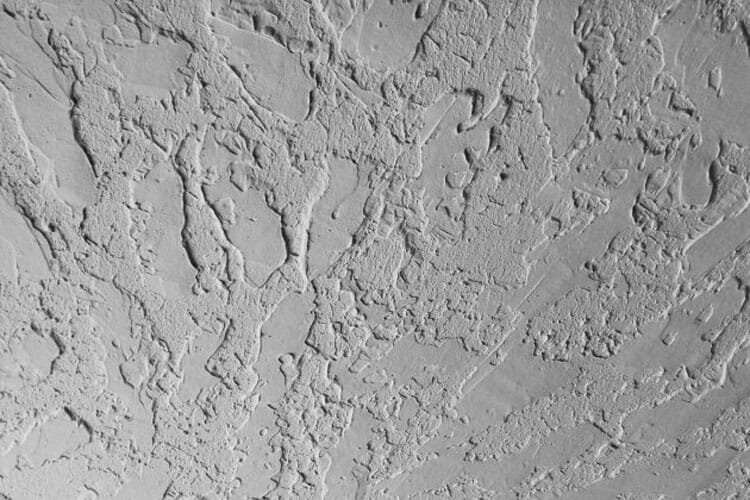
12 | Spray Sand Swirl Texture
The spray sand swirl technique has been utilized for decades, but only recently has it become available in paint form. The result is a textured surface that mimics the look of natural stone; it’s also appealing because the colors you choose to use can create stunning combinations.
You won’t believe how easy it is to create spray sand swirl texture coating! All you need are some supplies from your local hardware store, then you can apply the base coat in any color. Once the first layer has dried, spray an off-white topcoat onto the surface. The end result? An interplay of light and dark tones makes it hard to tell where one begins and the other ends.
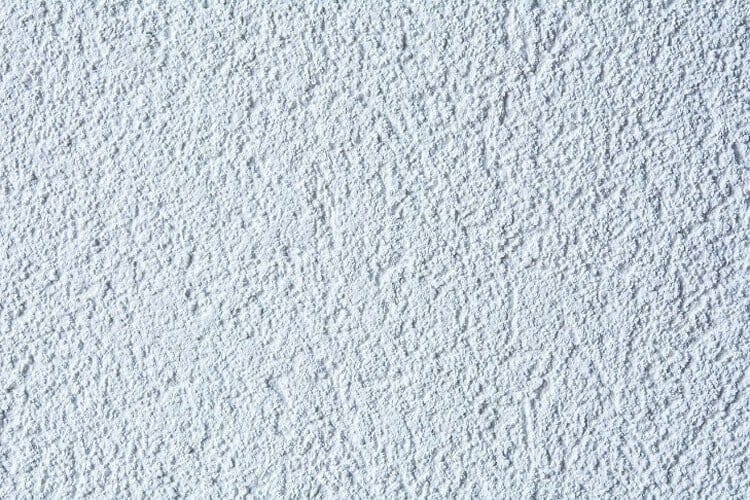
13 | Crow’s Feet Texture
Crows foot which is also referred to as stomp brush, or stipple, because it’s created with a paint roller and the end of a stomp brush. The end result is simply incredible: tons of tiny, evenly-spaced bumps that add depth and texture to your walls. The crow’s feet technique adds dimension and interest to any space.
Crow’s feet texture is created by applying a base coat of paint with an air gun, then adding a second coat that has been dragged through the pattern using a drywall taping knife. As seen in the photo here, it creates textured walls that are slightly bumpy but not rough to the touch – they’ll be wonderfully smooth and inviting.
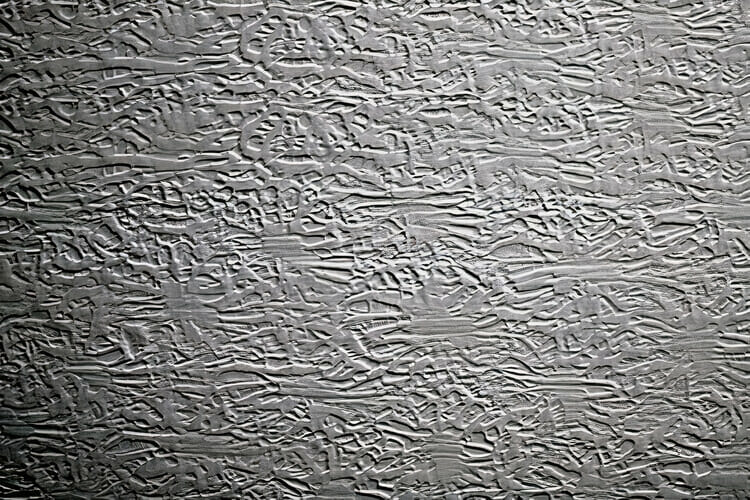
14 | Spanish Lace Wall Texture
Spanish lace is a contemporary wall texture seen in more modern settings and is akin to stomp knockdown in appearance. It’s considered a cousin of the classic design known as herringbone. The layers of paint create a pattern that is similar to a fabric weave – yet another way this texture type can mimic natural materials!
Spanish lace texture is made by applying a white initial layer with the air gun, then adding a second topcoat that’s been dragged through the pattern using an edging trowel. As you can see, it creates textured walls that are slightly bumpy but not rough to the touch – they’ll be wonderfully smooth and inviting.
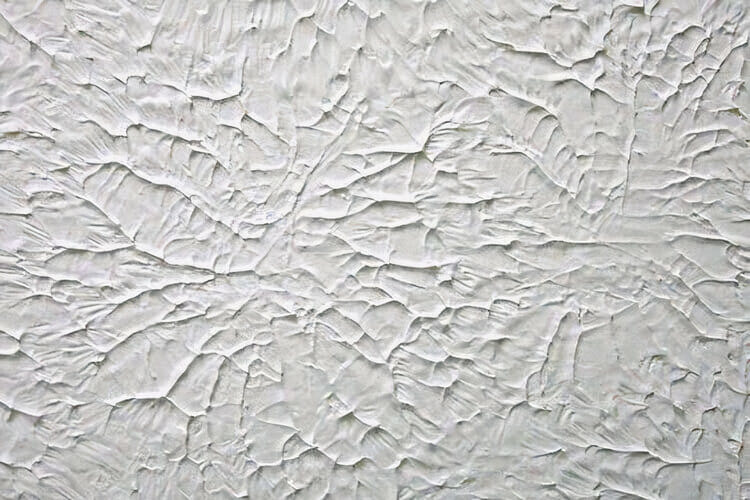
15 | Ridged Texture Wall
A ridged texture (or bumpy) wall has a tremendous amount of variation – it can be either small bumps or larger bumps, and denser or spaced out. It’s a versatile option that can work in any room, adding visual interest to an otherwise simple space.
The ridged texture is crafted by spraying a base coat of paint with an air gun, then dragging the trowel through it to create the ridges. The key here is to work fast – you don’t have much time between applying the base coat and applying the ridge-maker before the paint starts to dry.
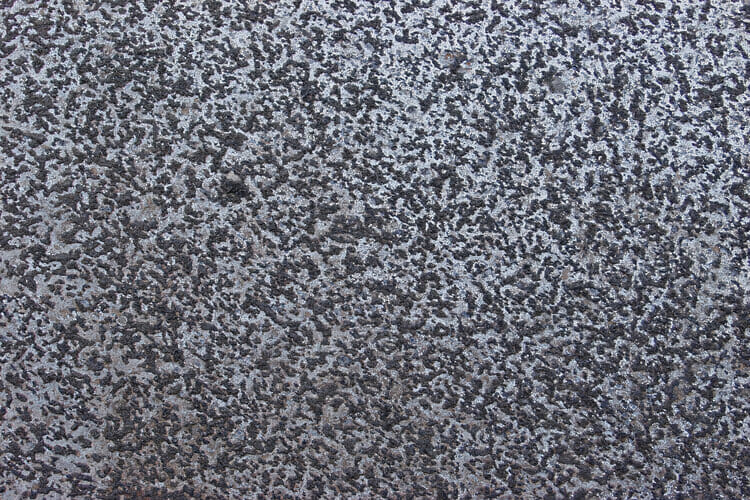
16 | Stucco Textured Walls
There are several variations of stucco textures that can be created in your home or office, including marbled and sandblasted. The main difference in these types is the depth of the pattern – one is more surface deep than the other.
Stucco walls are made by applying a base coat that has been troweled smooth, then adding the stucco finish. This creates textured walls that are rough to the touch – but you can use tools with smoother edges to create more subtle effects if desired. Stucco texture is an excellent choice for those who want a wall treatment that’s a little bit rougher.
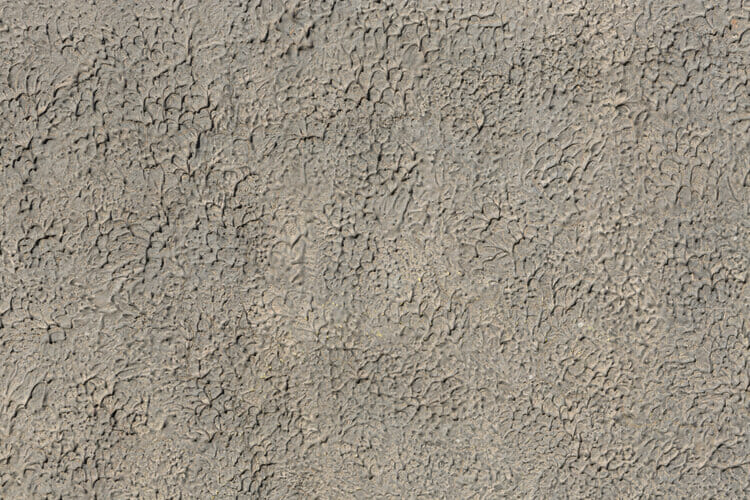
17 | Wave Texture Coating
While the easy option here would be to buy a 3D Wave Wall from the likes of Amazon, you can create your own wave texture wall instead! It’s actually easier than you might think to create an oceanic-themed room, for say your home theater or living room.
A wave texture is constructed by coating a wall with alternating thick and thin (roughly 1/8 inch apart) layers using a paint gun. When you see it from far away, the thin parts look like they’re blending together to create ripples running horizontally across the surface of the wall. Where they run vertically, it creates small cracks, which is why this texture is best used on accent walls.
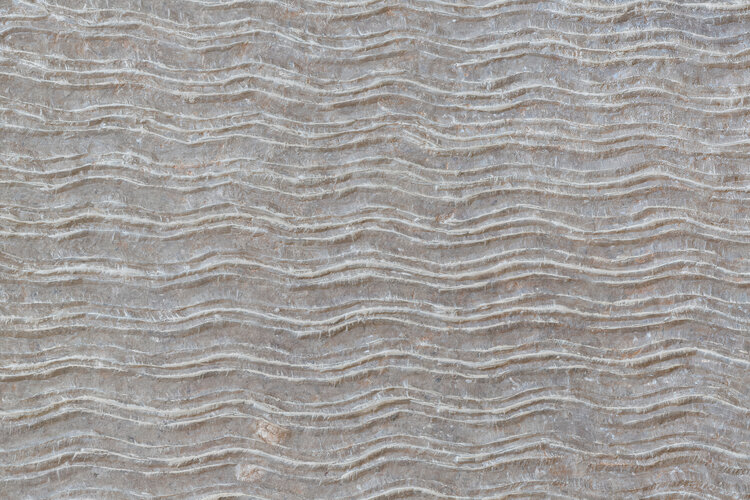
18 | Ribbed Drywall Textured Wall
Drywall with joint compound (a mix of water and gypsum) is the cheapest way to get bulk-applied texture in your home. It’s considered a contemporary wall texture for commercial real estate type settings and the go-to for new builds seeking drywall textures.
To create a textured wall this way, you have to apply the drywall mud by hand, with a special trowel. This wall texturing technique is more effective if you use a ‘mud’ trowel to apply your first layer of drywall mud, and then a sponge float (a textured form of sandpaper) to finish off. You’re likely going to need to watch a few YouTube videos to get the hang of this one.
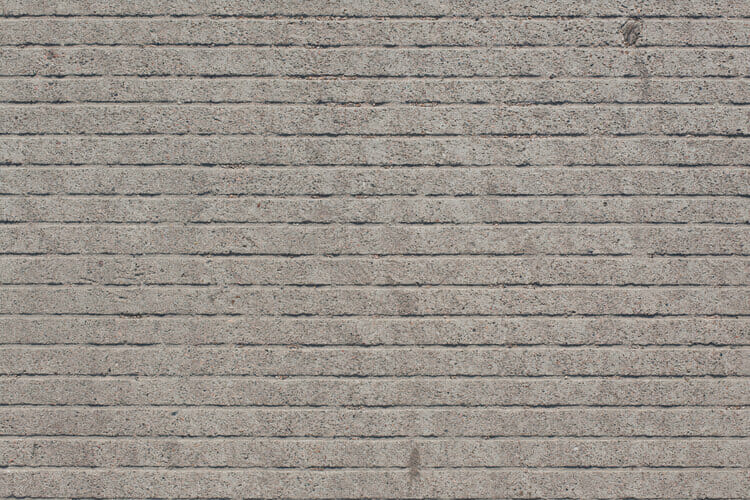
Wall Texture Types FAQ.
Which is Better Wallpaper or Texture Paint?
One isn’t better than the other, but you have to consider the big difference. Wallpaper is something that will be on the walls for a long time, and if you don’t like it, it’s not easy to remove.
Texture paint can be done quickly and easily whenever you want to change things up. It isn’t as permanent as wallpaper. Typically, texture paint is better for your walls than wallpaper, which can peel away the surface.
Another negative in regards to wallpaper, is that it also absorbs dirt and is difficult to clean. For this reason, homeowners are turning away from wallpapers in favor of affordable do-it-yourself texture paint treatments that leave walls looking great for longer.
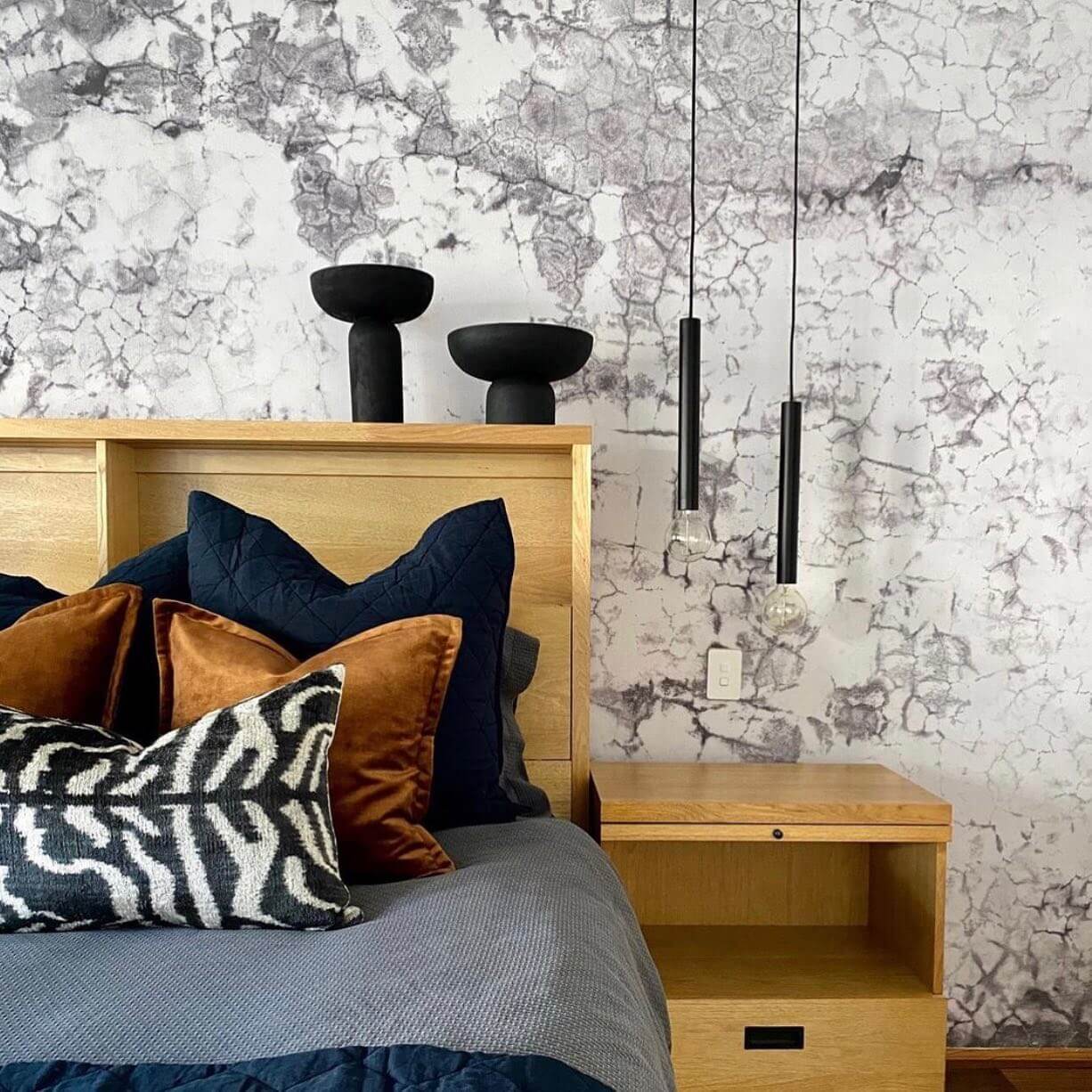
What Is the Most Popular Wall Texture?
The most popular wall texture is popcorn textured walls. They became popular in the 1970s and 1980s with prefabricated textured walls, but the process is now done manually with texture paint.
This type of wall texture is popular due to its inexpensive cost and because it can be applied by anyone. If you’re going the homemade DIY route, and the cost is a concern, popcorn texture is a fantastic wall texture type.
Although, the main drawback is that if you no longer want popcorn textured walls, it’s very difficult to return the walls to their smooth state. Just something to keep in mind.
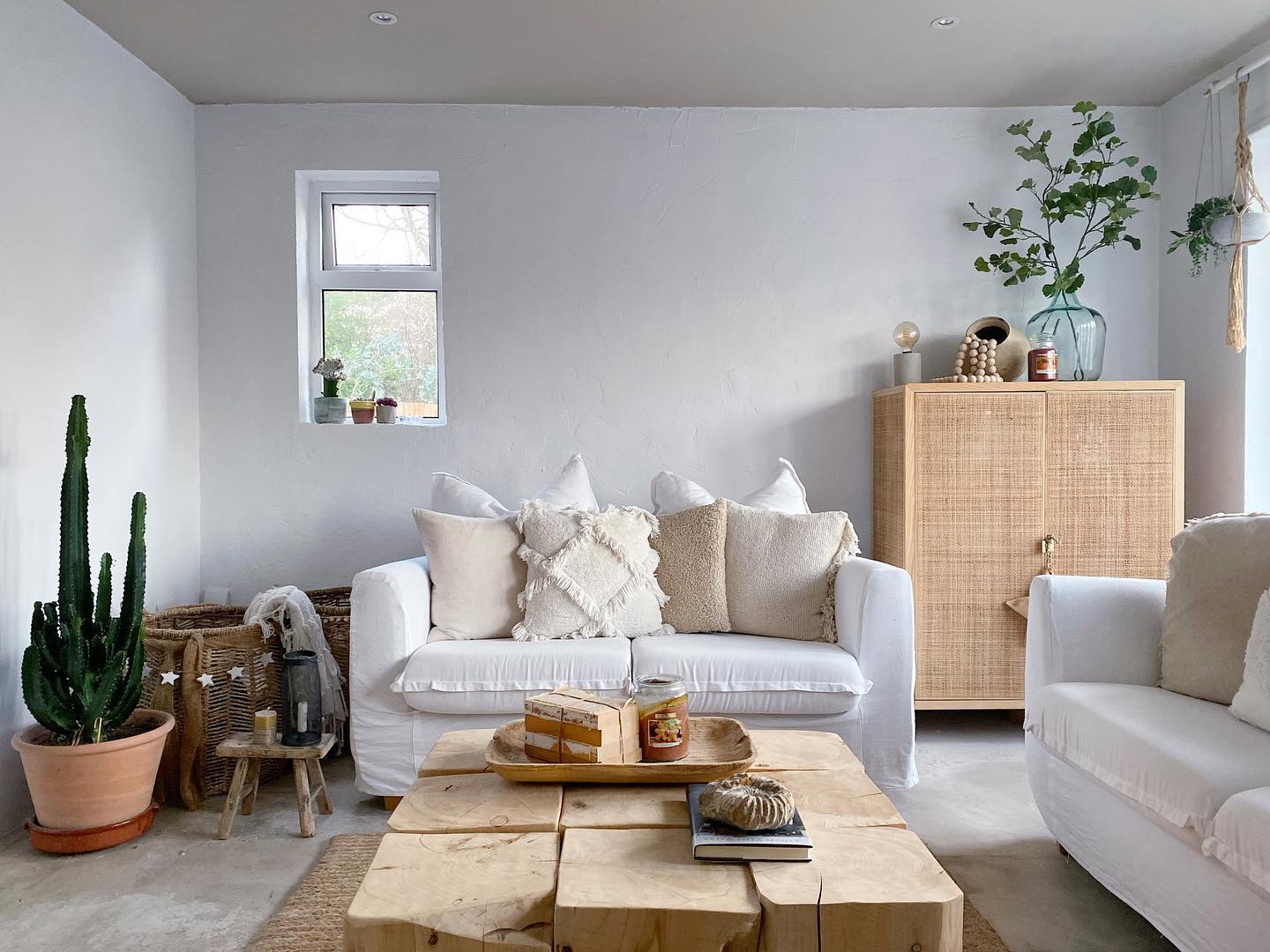
How Much Does Texture Paint Cost?
The cost of texture paint varies greatly depending on the size of a room, how much paint you need, and what type of textured effect you want.
Prices range from US$3 to US$5 per square foot, although this also depends on the type of brand you choose. Still, this is a very affordable option for transforming your DIY man cave when compared to the cost of hiring someone to apply textured wall treatment.
What Tools Are Used in Textured Wall Treatments?
There are many types of tools used in textured wall treatments. Here are a handful of must-have hand tools for types of wall textures DIY projects.
Must-Have Tools
Sure, there are plenty of other tools you can equip yourself with when attempting smooth drywall or bumpy texture finishes.
But, whether it’s a slap brush technique or an orange peel wall texture job, these tools are some of the essentials you’ll need.
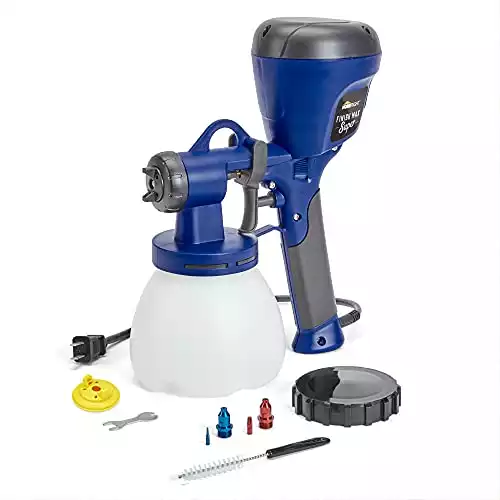 HomeRight C800971 Super Finish HVLP Paint Sprayer
HomeRight C800971 Super Finish HVLP Paint Sprayer
- Equipped with a single-stage 450-watt motor to take on the toughest of jobs so you can use thicker liquids without the need for thinning.
- Utilizes a soft start variable speed motor and comfortable top-mount rubber grip it provides a high level of comfort to match its power.
- Fitted with HVLP system (high-volume low-pressure) sprayers allowing the C800971 to use 80% less paint than conventional sprayers.
- The adjustable pressure knob allows you to dial in the perfect amount of paint for any job - from high viscosity paints, stains, varnishes, lacquers, and primers.
The Bottom Line
Be it dimpled texture or floral patterns with overlapping layers, the bottom line is that texture paints are your best bet for an easy, inexpensive alternative to wallpaper for the likes of your basement bar or recreational room.
Key Takeaways:
Like with all DIY endeavors, it’s super important to do your research if you want to learn the right way the first time round. Learning how to apply these types of textures takes time and patience, but the end result is worth it.

